|
|
 "QUANTUM SHOT" #463 "QUANTUM SHOT" #463
link
This article is written by RJ Evans, ed. by Avi Abrams
Water on the Web - Nature's Jewelry
Dew drops, each a splendid world of reflection - caught in a silvery web on an early morning:
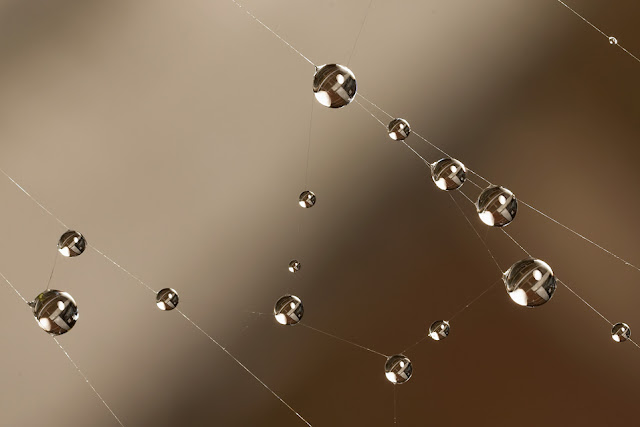
(image credit: Brian Valentine, see the whole wonderful set here)

(image credit: Evan Leeson)
Another one from his "A Thousand Drops of Light" set:

(image credit: Evan Leeson)

(original unknown)
Freezing fog created these icy decorations on a cobweb:
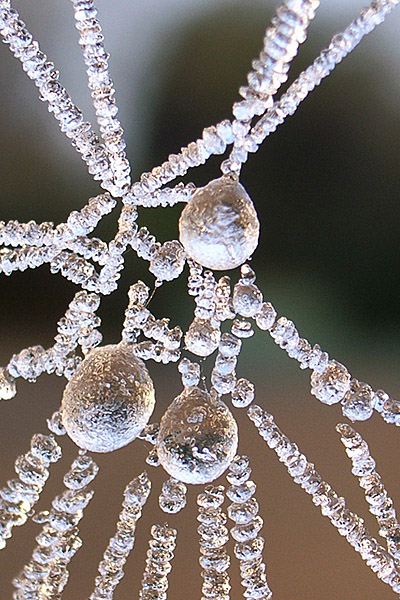
(image credit: fenlandsnapper)
Nature Imitates Man?
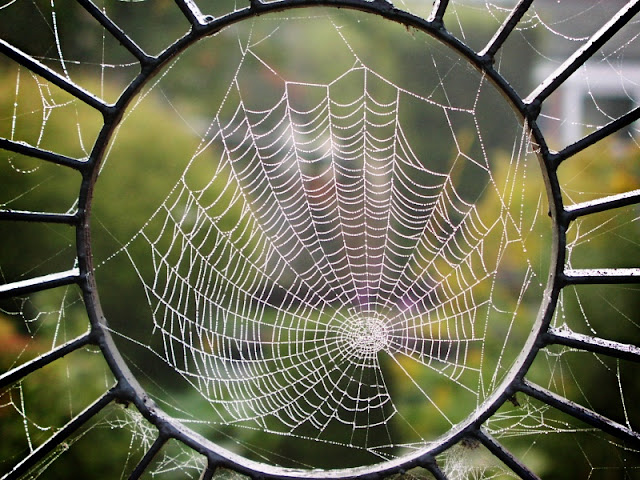
(image credit: kieran_m)
Such is the strength of the design of the spider web that it has been adapted in to much of our own architecture. Sometimes the spiders seem to get their ideas from us, but that really isn’t the case! The thread that spiders produce come from glands called spinnerets. There are, so far, seven different types of spinnerets that have been identified and each one has a separate purpose. Each type of spider will possess a few of these spinneret glands, but there has never been a recorded case of a spider having all seven types!
Home is where you weave it
Not all spider webs are spiral or orbic in shape, though these are the most common:
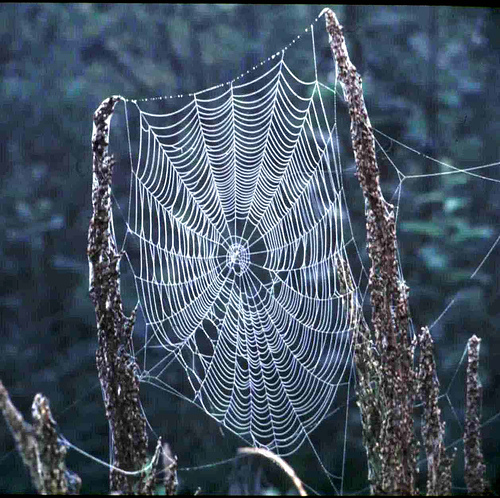
(image credit: moonjazz)
Black Hole Fly Nemesis
There are sheet webs, like this one - with the spooky “black” hole at the center! -

(image credit: Paul)
Then, there are funnel and tubular webs – the names speak for themselves... Finally there are dome or tent webs that can cover huge areas. The capture silk above is from the “fluffy” variety. Orb webs that most people usually associate with spiders use “sticky” silk.

(image credit: Mike)
It took Homo sapiens thousands of years of thought to come up with the idea of ergonomics, but spiders have been at it for millions of years. When making its web, the spider will use its own body for measurement. In this way the web is the ultimate in practicality and ergonomic design. The spider is able to get around the web extremely quickly and efficiently and will not fall through the holes!
Dawn

(image credit: Mark)
Have you ever had job to do that is so daunting it takes you an incredibly long time just to get around to starting it, if you ever start it at all? Then spare a thought for your friendly neighborhood arachnid. As with any big job, it is the first thread that is the most difficult for the spider. It will use the wind to carry the first thread from one of its spinnerets. With some luck it will stick to a suitable surface. This is why sometimes you wonder why a spider would place its web in some place rather than another! After the first thread sticks, the spider moseys on over and strengthen it with a second thread. Then it carries on doing it until it judges that the “first” thread is strong enough to support the rest of the web.
On a Scroll

(image credit: Sue Lovell)
Once that difficult first thread is finished, the spider then goes on to make a “Y” shape netting. After that the first three radial surrounds are built. Using its own sense of ergonomics, the spider ensures that the space between each radial is small enough for it to get over. So, with a little mathematics, you can work out how big a spider is without seeing it: judging from the size of its web and the number or radials it has.
War of the Worlds?

(image credit: Katja Hofmann)
The above is a “fluffy” web taken in a park in Holland. It isn’t actually an attempt to take over the world but works as a kind of obstacle course. Its intention is to confuse insects and make them more likely to get trapped. It also helps the spider avoid being lunch for its enemies, such as wasps and birds.
Whorled White Web

(image credit: David Reeves)

(image credit: Chris Bainbridge)
Once the radials are finished the spider will make the center of the web stronger with six or so circular threads. Then a spiral is made (non stick!) so the spider can move around while it is building the web. Starting from the outside and working towards the middle, the spider then creates the sticky spiral threads that will catch its dinner. Ergonomics again – the length of the spider, from the very tip of its back legs to its spinnerets is in proportion to the space between each spiral. As the sticky spirals are produced the spider removes the original non stick one as it is no longer needed.
Webopolis
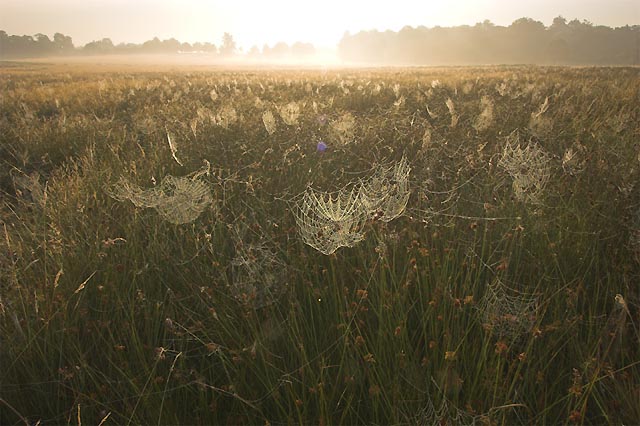
(image credit: Giles Breton)
Sometimes, many spiders will build webs together. The above is a beautiful picture but gives no real impression of the real size to which group webs can grow. Try the one below!

(image credit: Donna Garde, Texas Parks & Wildlife)
This giant communal spider web was photographed in Texas and measured over one hundred and eight meters in length (more info). Entomologists think that it may be the results of socialization, with spiders deliberately building webs in unison that merge in to one giant net (for elephants possibly?). However, scientists have no real idea whether the spiders are working in a “Borg” like way or it is simply accidental.
Delicate Strength
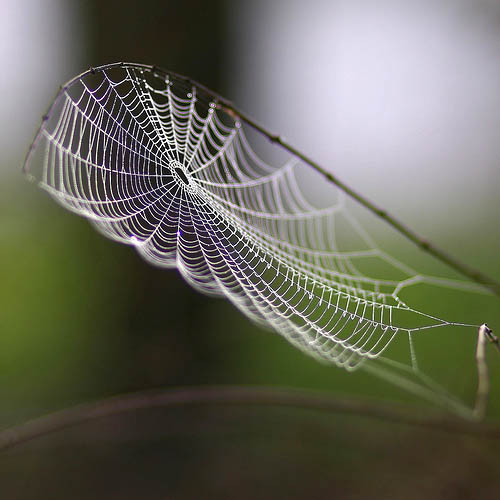
(image credit: Robert S. Donovan)
Once the web is complete the spider bites off the three spirals at the center. Then it sits and it waits! Hopefully, before long, something plump and juicy will get stuck.
The web is an incredibly efficient way of gathering food. The spider doesn’t have to go chasing after its prey – it simply waits. However, everything has its downside. The web is high in protein and as such its production takes a lot of energy. What a lot of spiders do is at the end of a day, when the web has lost a lot of its stickiness, they will eat it!
In this way the spider recycles its own web and regains some of the energy it used to make the web in the first place.
Dartboard
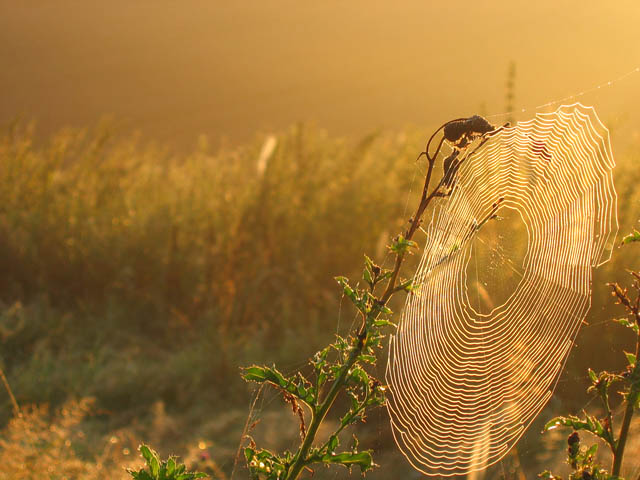
(image credit: Peter Olin)
Spider silk has a greater tensile strength than a chunk of steel weighing the same amount. As scientists look more towards nature for their inspiration, more potential applications in industry are developed - from parts of artificial prosthetics, to bullet proof vests. On the downside, some scientists are already genetically modifying other animals to produce the proteins that make the web.
How far we are away from a Frankenstein scenario is anyone’s guess.
A Fairy’s Necklace

(image credit: Edith)

(image credit: Tollen)
One question comes to mind: why don’t spiders stick to their own webs? Well, it is true they do not usually get glued in their own cobweb...
However, they have to be careful! The spider has to choose where it will wait for its prey and that is always spun with the non sticky stuff. However, when they leave their monitoring position they do have to be careful to only climb along the non sticky threads! Otherwise they will become a meal for any passing creature, hoisted on their own petard!
Flower Web
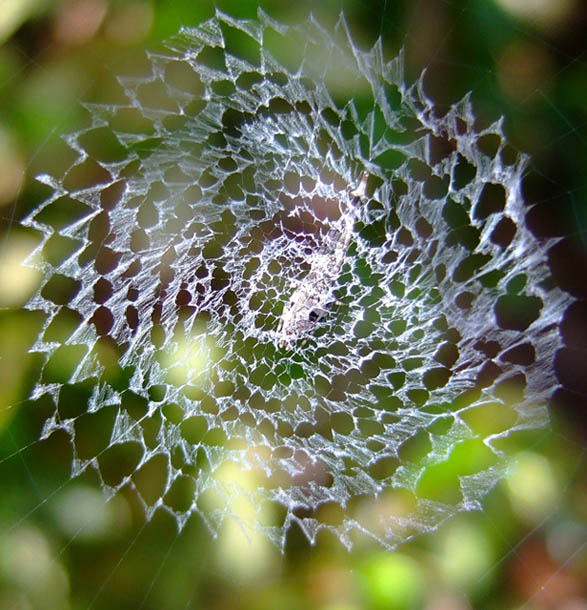
(image credit: James Baker)
It should be pointed out here that some species of spider do not use webs at all, instead relying on more traditional methods of hunting, such as 'pouncing' or even openly chasing down their prey. However, without the spider web we would lose one of the more beautiful sights that Mother Nature has to offer...
... among other wonders in its marvelous glamour & jewelry shop:
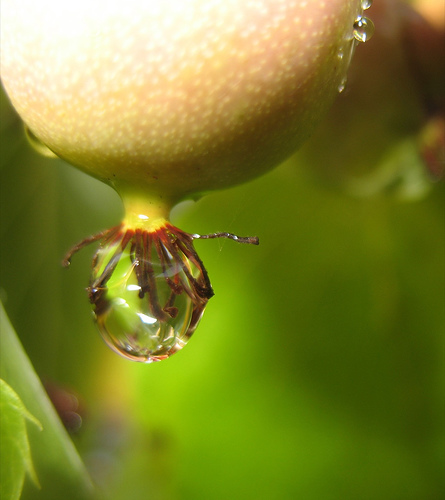
(image credit: Scott Stevens)
Also read:
Spiders! Close Up Photos
Fungus, Lichen and Moss
Permanent Link... ...+StumbleUpon ...+StumbleUpon  ...+Facebook ...+Facebook 
Category: Nature,Photography
Dark Roasted Blend's Photography Gear Picks: |
|
RECENT ARTICLES:
"Dark Roasted Blend" - All Kinds of Weird and Wonderful Things, Discovered Daily!"
DRB is a top-ranked and respected source for the best in art, travel and fascinating technology, with a highly eclectic presentation. Our in-depth articles in many categories make DRB a valued online magazine, bringing you quality info and entertainment every time you visit the site - About DRB
Connect with us and become part of DRB on Facebook and Twitter.
YOUR COMMENTS::
READ OTHER RECENT ARTICLES:
CATEGORIES:
Feel-Good! | airplanes | animals | architecture | art | auto | boats | books | cool ads | famous | futurism | food
gadgets | health | japan | internet | link latte | military | music | nature | photo | russia | steampunk
sci-fi & fantasy | signs | space | technology | trains | travel | vintage | weird | abandoned
|
|























































































21 Comments:
Love these articles.
Quite Beautiful! Thanks!
Thank you! Some days I get so involved in my own silly problems; in the little life I'm living (and feel is just SO important!) that I forget what an amazing, beautiful world with which God has blessed me. Thanks for the reminder to look around...
The pictures from holland aren't actually spiderwebs, but rather a protective covering created by caterpillars. They can cover entire trees and bushes in a dense white webbing to protect themselves from predators.
Amazingly beautifull...
Cool...
Camel spiders are so named because they can jump to the height of a camel's belly, and draw blood from them directly. That is scary, I don't care who you are.
Gorgeous photos! Spiders absolutely fascinate me. My avatar is actually a picture I took of a Golden Orb Weaver on her web in our backyard. Orb webs are the prettiest, but also pretty are the sheetlike webs that the Funnel Spider makes. We currently have a Funnel Spider living near the frontdoor of our house that is starting to build a sheet, and it's slowly getting bigger. We won't be taking it down anytime soon. Our house is a spider-friendly area. :P Two years ago, we had a funnel spider build a sheet that covered half of our front door! Let's just say it made for a very interesting conversation piece. :P
- via digg
This is amazing stuff. Simple no words. You have compelled me to bookmark this outstanding page. Great architectural work!
I love your photos! Earlier this week I took some good spider web photos. And I have been on the hunt for more to photograph.
About genetic engeneering, if I remeber well, scientist have introduces spider genes in cows to try to produce milk with silk (spider's of course).
My house too is spider friendly, I have one in my room, a rather big one, who keeps insects and flies away:)
Only a fool could say this capability evolved ... thanks for the reminder!
These are gorgeous photographs, and remarkable work on the part of our eight-legged neighbors.
Wow...don't usually post stuff but these are beautiful!!! I'm inspired to find some webs and try this myself now...my house is also spider friendly...they are all called fred (for the boys) and of course Charlotte (for the girls)!!:)
This post just screams out for A. R. Ammons's poem "Identity":
1) An individual spider web
identifies a species:
an order of instinct prevails
through all accidents of circumstance,
though possibility is
high along the peripheries of
spider
webs:
you can go all
around the fringing attachments
and find
disorder ripe,
entropy rich, high levels of random,
numerous occasions of accident:
2) the possible settings
of a web are infinite:
how does
the spider keep
identity
while creating the web
in a particular place?
how and to what extent
and by what modes of chemistry
and control?
it is
wonderful
how things work: I will tell you
about it
because
it is interesting
and because whatever is
moves in weeds
and stars and spider webs
and known
is loved:
in that love,
each of us knowing it,
I love you,
for it moves within and beyond us,
sizzles in
to winter grasses, darts and hangs with bumblebees
by summer windowsills:
I will show you
the underlying that takes no image to itself,
cannot be shown or said,
but weaves in and out of moons and bladderweeds,
is all and
beyond destruction
because created fully in no
particular form:
if the web were perfectly pre-set,
the spider could
never find
a perfect place to set it in: and
if the web were
perfectly adaptable,
if freedom and possibility were without limit,
the web would
lose its special identity:
the row-strung garden web
keeps order at the center
where space is freest (intersecting that the freest
"medium" should
accept the firmest order)
and that
order
diminishes toward the
periphery
allowing at the points of contact
entropy equal to entropy.
(see the link for the appropriate formatting)
Idanogie,
Thank you for this...
Incredible. Thank you for posting.
Adam
www.twilightearth.com
Not quite as beautiful as natural spider webs but look at this to see an amazing piece of art made from led lighting & thousands of crysals. http://www.flickr.com/photos/liverpoolbiennial/2892056332/in/set-72157607535470041/
I just stumbled upon this site: so awesome!
I just wanted to say that I appreciate that none of these photos contained the actual spiders. While I find spiderwebs beautiful and fascinating, their creators scare the bejeezus out of me >.<.
What an awesome bunch of photos! Evolution leads to some amazing things.
I love this site and I do love spiders too, they are one of the most beautiful creatures of the earth...my colleague to whom I share desk with in the office is scared of them, especially of heavy cobwebs, guess what sort of link have I just been forwarded to him...:)
Post a Comment
<< Home